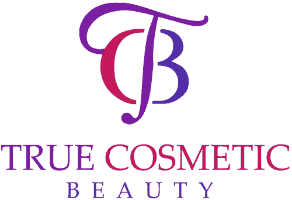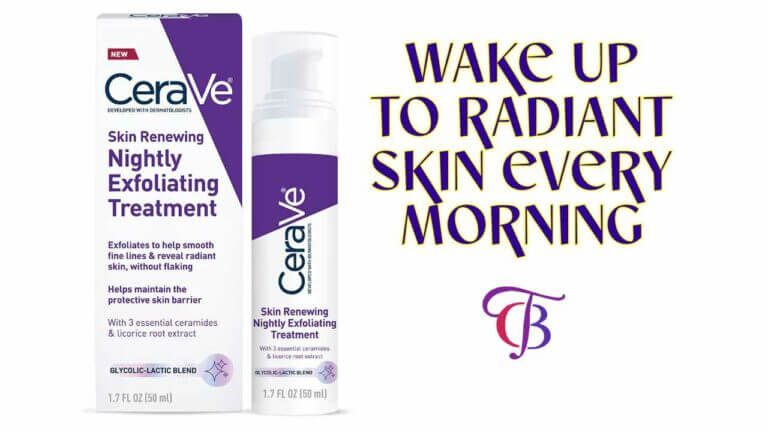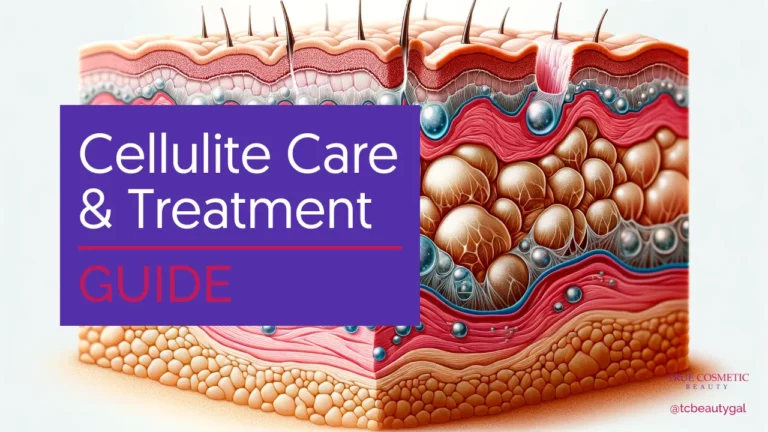Complete Guide to Skin Exfoliation – Methods, Benefits, and Best Practices
Welcome to our guide to effective skin exfoliation! If you’ve been seeking a solution to dull, rough skin, this guide is for you.
Exfoliation is a crucial step in your skincare routine, as it helps to remove dead skin cells, unclog pores, and improve the overall texture and appearance of your skin.
In this guide, we will explore the various methods of exfoliation, the benefits of regular exfoliation, and the best practices to ensure you achieve healthy, glowing skin.
Key Takeaways
- Exfoliation is the process of removing dead skin cells from the skin’s surface, promoting skin renewal and enhancing its natural radiance.
- There are various methods of skin exfoliation, including physical exfoliants (scrubs), chemical exfoliants (acids), and enzymatic exfoliants, each with its own benefits and best practices.
- Regular exfoliation can help improve skin texture, reduce the appearance of fine lines and wrinkles, prevent clogged pores, and promote better absorption of skincare products.
- It is important to tailor your exfoliation routine to your skin type and concerns, as over-exfoliation can lead to irritation and damage to the skin barrier.
- When exfoliating, remember to moisturize and protect your skin from the sun, as exfoliation can make the skin more sensitive to UV rays.
Different Types of Skin Exfoliation
One of the key elements of maintaining healthy, glowing skin is exfoliation. There are various methods of exfoliation that work in different ways to slough off dead skin cells, reveal fresh skin, and improve skin texture. Here are the main types of exfoliation:
| Chemical Exfoliation | Uses acids or enzymes to dissolve dead skin cells |
| Physical Exfoliation | Involves scrubbing the skin with abrasive materials |
| Enzyme Exfoliation | Utilizes natural enzymes to digest dead skin cells |
| Microdermabrasion | A mechanical exfoliation method that uses a device to buff away dead skin cells |
Chemical Exfoliation
Chemical exfoliation involves the use of acids or enzymes to dissolve dead skin cells and reveal a smoother, more radiant complexion. This method can be more gentle and suitable for sensitive skin types. Salicylic acid, glycolic acid, and lactic acid are commonly used in chemical exfoliants. They work by breaking down the bonds between skin cells, allowing for easier shedding of dead skin.
Physical Exfoliation
Physical exfoliation involves the use of abrasive materials to manually slough off dead skin cells. This can be in the form of facial scrubs, cleansing brushes, or exfoliating towels. However, it is important to be gentle with physical exfoliation as aggressive scrubbing can cause micro-tears in the skin, leading to irritation and inflammation.
Enzyme Exfoliation
Enzyme exfoliation involves the use of natural enzymes such as papain from papaya or bromelain from pineapple to help gently dissolve dead skin cells. This method is considered gentle and suitable for individuals with sensitive skin, as it does not require manual scrubbing. Enzyme exfoliation can help reveal a fresh, glowing complexion without causing irritation.
Microdermabrasion
Microdermabrasion is a mechanical exfoliation method that uses a device to buff away dead skin cells. This treatment is performed by a skincare professional and can help improve the texture and appearance of the skin. It is important to ensure that the procedure is carried out by a trained professional to minimize the risk of complications and achieve the best results for your skin.
Step-by-Step Guide to Skin Exfoliation
Your skin is constantly shedding dead skin cells, leaving behind a layer of dull, rough skin. Regular exfoliation can help remove these dead skin cells, revealing smoother, brighter skin. Here’s a step-by-step guide to help you achieve optimal results.
| Step 1 | Gently cleanse your skin with a mild cleanser to remove any makeup, dirt, and impurities. |
| Step 2 | Choose an exfoliant that is suitable for your skin type and concerns. This can be a physical exfoliant (such as a scrub) or a chemical exfoliant (such as a peel or serum). |
| Step 3 | Apply the exfoliant to your skin, avoiding the delicate eye area. Massage the product in gentle, circular motions for about 1-2 minutes. |
| Step 4 | Rinse off the exfoliant with lukewarm water and pat your skin dry with a clean towel. |
| Step 5 | Follow up with a hydrating and nourishing moisturizer to replenish your skin’s moisture barrier. |
| Step 6 | Apply sunscreen if exfoliating during the day to protect your skin from sun damage. |
Preparing Your Skin for Exfoliation
Before you begin the exfoliation process, it’s important to prepare your skin to ensure optimal results and minimize the risk of irritation. Start by cleansing your skin with a gentle, non-abrasive cleanser to remove any surface impurities and makeup. This will help ensure that the exfoliant can properly penetrate your skin.
The Exfoliating Process
During the exfoliation process, it’s essential to be gentle and mindful of your skin’s needs. Whether you are using a physical or chemical exfoliant, be sure to follow the product’s instructions carefully and avoid over-exfoliating, which can lead to irritation and sensitivity. Additionally, be mindful of the pressure and duration of the exfoliation, ensuring that it is gentle and not overly aggressive.
Post-Exfoliating Care
After exfoliating, it’s crucial to follow up with proper post-exfoliation care. This includes moisturizing your skin with a nourishing and hydrating moisturizer to replenish any lost moisture and protect your skin’s barrier. Additionally, apply sunscreen if exfoliating during the day to shield your skin from harmful UV rays. By taking these post-exfoliation steps, you can help maintain the benefits of exfoliation and keep your skin healthy and protected.
Factors to Consider When Choosing Exfoliation Method
After learning about the various exfoliation methods, you need to consider several factors before deciding which method is best for you. Here are some important considerations to keep in mind:
- Skin Type: Your skin type plays a crucial role in determining the most suitable exfoliation method for you. Different methods work better for dry, oily, combination, or sensitive skin.
- Skin Sensitivity: The sensitivity of your skin is another crucial factor. Some exfoliation methods can be too harsh for sensitive skin, causing irritation and redness.
- Desired Outcome: Consider the results you want to achieve from exfoliation. If you’re aiming to improve skin texture, reduce acne, or minimize fine lines, certain methods may be more effective for your goals.
- Financial Commitment: Finally, you need to think about the cost and time commitment required for each exfoliation method. Some methods may be more affordable yet require more frequent application, while others may be pricier but yield longer-lasting results.
After taking these factors into account, you can make a more informed decision about which exfoliation method will best suit your needs.
Skin Type
When considering the best exfoliation method for your skin, it’s crucial to take into account your skin type.
If you have dry skin, you should look for gentle exfoliation methods that won’t strip away too much moisture from your skin. Oily skin may benefit from more intensive exfoliation to unclog pores and prevent breakouts. Combination skin requires a balanced approach, targeting different areas of the face accordingly. Finally, if you have sensitive skin, you should choose exfoliation methods specifically designed for delicate skin to avoid irritation or inflammation.
Skin Sensitivity
Another crucial factor in choosing the right exfoliation method is the sensitivity of your skin.
If you have highly sensitive skin, harsh exfoliation methods can cause redness, irritation, and even damage to the skin barrier. On the other hand, if your skin can tolerate more intense exfoliation, you may see better results with stronger exfoliants.
Desired Outcome
What are you looking to achieve through exfoliation? The desired outcome should guide your choice of exfoliation method.
If you want to improve skin texture and tone, you may need a method that penetrates deeper into the skin. If acne prevention is your goal, you may need a method that targets clogged pores. Reducing fine lines and wrinkles may require a method that stimulates collagen production.
Financial Commitment
Consider the financial commitment required for each exfoliation method.
Some methods may require purchasing specific products or visiting a professional, which can add up in cost. However, other methods may be less expensive but require more frequent use to maintain results. It’s essential to weigh the cost against the expected benefits and your budgetary constraints. Remember that investing in quality skincare is an investment in your skin’s health and appearance.
Pros and Cons of Skin Exfoliation
However, while skin exfoliation has numerous benefits, it is not without its drawbacks. It is important to weigh the pros and cons before incorporating exfoliation into your skincare routine. Here is a breakdown of the pros and cons of skin exfoliation:
| Pros | Cons |
| Removes dead skin cells, revealing a fresher, brighter complexion | Over-exfoliation can lead to irritation, redness, and sensitivity |
| Improves skin texture and tone | Can exacerbate conditions like eczema or rosacea |
| Helps skincare products penetrate more effectively | May cause micro-tears in the skin if not done properly |
| Stimulates cell turnover, promoting a youthful appearance | Can lead to sun sensitivity if not followed by proper sun protection |
Benefits of Regular Exfoliation
Regular exfoliation can offer a multitude of benefits for your skin. By removing dead skin cells, you can reveal a fresher, brighter complexion and improve skin texture and tone. Additionally, exfoliation can help stimulate cell turnover, promoting a youthful appearance and allowing your skincare products to penetrate more effectively for optimal results.
Potential Risks and Drawbacks
While exfoliation can be beneficial, it is important to be aware of the potential risks and drawbacks. Over-exfoliation can lead to irritation, redness, and sensitivity, and exacerbate conditions like eczema or rosacea. Additionally, improper exfoliation techniques can cause micro-tears in the skin and may increase sun sensitivity if not followed by proper sun protection.
Tips for Effective and Safe Skin Exfoliation
Despite the numerous benefits of skin exfoliation, it is important to approach the process with caution to avoid damaging your skin. Here are some tips to ensure that your exfoliation routine is effective and safe:
- Choose the right exfoliant for your skin type
- Follow the instructions for the exfoliating product
- Avoid over-exfoliation
- Protect your skin from the sun
- Moisturize and hydrate your skin
The key to effective and safe skin exfoliation is to be attentive to your skin’s needs and responsive to any signs of sensitivity or irritation. By following these tips, you can achieve the desired results without compromising the health of your skin.
Choosing the Right Exfoliating Products
When it comes to choosing the right exfoliating products, it’s essential to consider your skin type and any specific concerns you may have, such as acne or hyperpigmentation. Look for exfoliants that are formulated for your skin type and address your specific skin concerns. Additionally, consider the exfoliation method – whether it’s physical, chemical, or enzymatic – that aligns with your skin’s needs.
Timing and Frequency of Exfoliation
When it comes to the timing and frequency of exfoliation, it’s important to strike the right balance. Depending on your skin type and the exfoliation method you’re using, exfoliating 1-3 times a week is typically recommended. However, it’s crucial to listen to your skin and adjust the frequency as needed. Over-exfoliation can lead to irritation, inflammation, and damage to your skin’s barrier, so it’s essential to be mindful of how your skin responds.
Safeguarding Against Over-Exfoliation
To safeguard against over-exfoliation, it’s important to pay attention to the cues your skin provides. If you notice persistent redness, irritation, or increased sensitivity after exfoliating, it may be a sign that you’re over-exfoliating. Additionally, it’s essential to avoid combining multiple exfoliating products or using exfoliants too frequently, as this can compromise your skin’s health and integrity.
Best Practices for Each Type of Skin Exfoliation
After understanding the different types of skin exfoliation, it is important to know the best practices for each method to ensure the best results for your skincare routine. Whether you are practicing chemical, physical, enzyme, or microdermabrasion exfoliation, there are certain practices that you should follow to maximize the benefits and minimize the risks.
Practices for Chemical Exfoliation
When it comes to chemical exfoliation, the most important practice is to choose the right product for your skin type. You should also patch-test the product before using it on your entire face to avoid any adverse reactions. It is crucial to follow the instructions provided by the manufacturer and avoid over-exfoliating as it can lead to irritation and sensitivity. Additionally, ensure that you apply sunscreen during the day as your skin becomes more susceptible to sun damage after chemical exfoliation.
Practices for Physical Exfoliation
If you prefer physical exfoliation, it is essential to choose a gentle scrub and avoid harsh, abrasive particles that can cause micro-tears in the skin. When using a physical exfoliant, gently massage it onto your skin in circular motions, avoiding any aggressive scrubbing. It is also crucial to pay attention to the frequency of physical exfoliation, as overdoing it can lead to irritation and damage to the skin’s protective barrier.
Practices for Enzyme Exfoliation
Enzyme exfoliation is known for its gentle yet effective nature. When practicing enzyme exfoliation, you should choose an enzyme product that suits your skin type and concerns. Make sure to leave the product on your skin for the recommended time to allow the enzymes to work their magic. Follow up with a gentle cleanse and apply a hydrating moisturizer to lock in the benefits. As with any exfoliation method, using sunscreen is essential to protect your skin from sun damage.
Practices for Microdermabrasion
Microdermabrasion is a more intense exfoliation method that requires careful consideration. When undergoing microdermabrasion, make sure it is performed by a licensed professional to minimize the risk of complications. After the treatment, it is essential to follow the post-care instructions provided by the professional to ensure optimal healing and results. It is also crucial to protect your skin from sun exposure and avoid using harsh products immediately after the treatment.
Conclusion
On the whole, exfoliation is a crucial step in any skincare routine and can benefit your skin in numerous ways. Whether you choose physical or chemical exfoliation, it’s important to understand your skin type and choose the method that best suits your needs. Remember to exfoliate no more than 1-2 times a week to avoid over-exfoliation, which can be damaging to the skin. Additionally, always follow exfoliation with proper moisturization to keep your skin hydrated and healthy. By following the tips and best practices outlined in this guide, you can achieve smooth, radiant skin and maintain its health and vitality over time.
FAQ
Q: What is skin exfoliation?
A: Skin exfoliation is the process of removing dead skin cells from the outermost layer of the skin. This process helps to improve skin texture, hydration, and overall appearance.
Q: What are the methods of skin exfoliation?
A: There are two main methods of skin exfoliation: physical and chemical. Physical exfoliation involves using a scrub or exfoliating tool to manually remove dead skin cells, while chemical exfoliation involves using alpha hydroxy acids (AHAs) or beta hydroxy acids (BHAs) to dissolve dead skin cells.
Q: What are the benefits of skin exfoliation?
A: Skin exfoliation can improve skin texture, reduce the appearance of fine lines and wrinkles, unclog pores, and promote a brighter, more even skin tone. It also allows for better absorption of skincare products, leading to more effective results.
Q: How often should I exfoliate my skin?
A: The frequency of skin exfoliation depends on your skin type. For most people, exfoliating 2-3 times a week is sufficient. However, if you have sensitive skin, you may want to exfoliate less often, while those with oily skin may benefit from more frequent exfoliation.
Q: What are the best practices for skin exfoliation?
A: When exfoliating, be gentle and avoid using overly abrasive products that can irritate the skin. Always follow exfoliation with a moisturizer to restore hydration. Additionally, be sure to wear sunscreen as exfoliation can make the skin more sensitive to the sun. It’s also important to pay attention to any signs of over-exfoliation, such as redness or irritation, and adjust your exfoliation routine accordingly.





